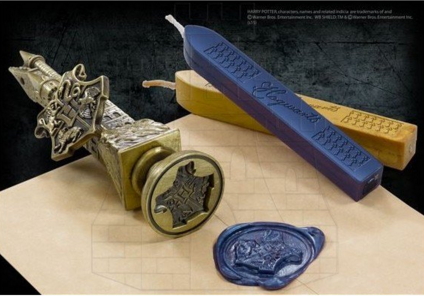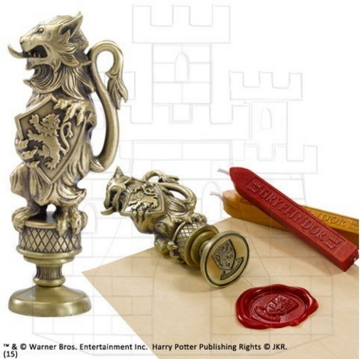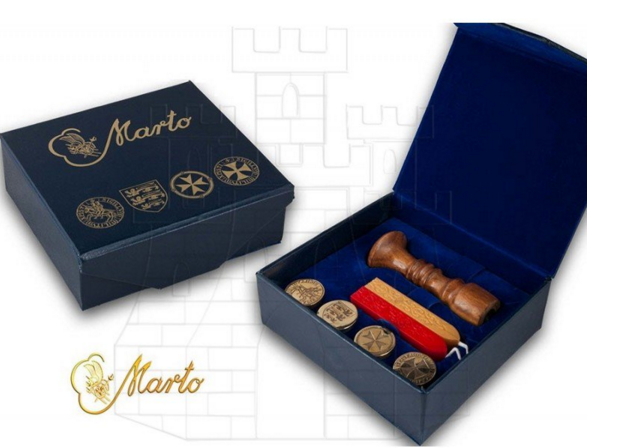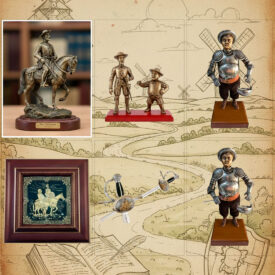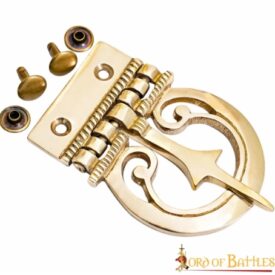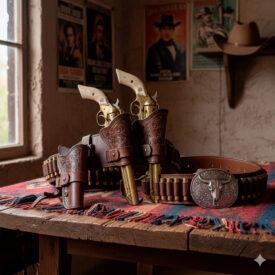Have you ever seen in historical movies the scene of an important letter sealed with mysterious wax and an engraved design? Most likely, yes. That wax, which melts and then hardens, is what we know as wax, and the mark it leaves is the wax seal. Beyond their appearance, wax seals connect us to a more tactile and meaningful form of communication.
In this article, we will discover what exactly wax seals are, explore their fascinating history through the centuries, learn how to use them today, and see their various modern applications. Get ready for a journey into the past with a contemporary touch.
What are Wax Seals?
To understand what a wax seal is, we first need to talk about its main component: sealing wax. This paste, traditionally red, is a combination of several ingredients, including rosin, shellac, turpentine, and a pigment that gives it its distinctive color. It’s important to clarify that the term “wax” refers to the paste, not to the metal seal itself.
The process is simple: sealing wax has a very low melting point, which allows it to melt easily when heated, for example, with a candle. Once melted, it is poured onto the desired surface and quickly pressed with a seal. As it cools, the wax hardens completely, sharply capturing the printed design.
A Journey Through Time: The Fascinating History of Wax Seals
Wax seals are not a recent invention; their use goes back to ancient civilizations.
Origins in Antiquity
The first known examples appear in Mesopotamia around 3500 BC, where they were used to imprint designs on clay tablets, for both decorative and practical purposes. In the Roman Empire, they began to be used to authenticate documents, symbolizing authority and trust.
A Status Symbol in the Middle Ages
During the Middle Ages, wax seals became a status symbol among the nobility and clergy. Letters sealed with wax often displayed intricate designs such as family crests or personal emblems, identifying the sender. Beyond aesthetics, these seals not only protected the content but also served as a mark of legitimacy. A broken seal indicated tampering, thus ensuring the confidentiality of the message.
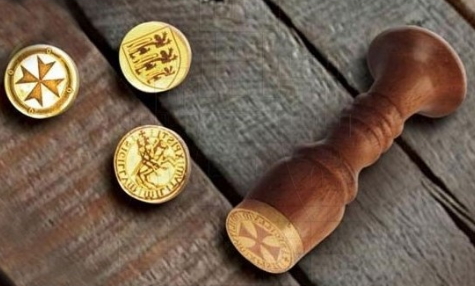
In the Middle Ages, sealing wax was made with melted beeswax mixed with Venice turpentine, a yellow-green resin (extract from the larch tree). The first wax seals were colorless; later they were often made of wax dyed red with cinnabar.
The Renaissance and Beyond
The Renaissance brought a resurgence of art and culture, and with it, the creation of more elaborate seals that enhanced the elegance of correspondence. By the 17th and 18th centuries, wax seals were common on personal and official documents, used in legal contracts, marriage certificates, and even passports. With the advent of the printing press and, later, digital communication in the 19th century, wax seals fell out of use.
In Roman times, they were commonly used in political-military documentation. According to historical sources, their invention originated in India, from where the formula for their preparation arrived in Europe via Spain. The first ones were made with colorless wax melted with Venice turpentine, and later, elements and colors—especially the red we all know—were added. Over time, in the 16th century, a mix of different proportions of shellac, turpentine, resin, plaster or chalk, and colorants (often still cinnabar, red, or even lead) was used, but not real wax.
The Renaissance of an Elegant Tradition
Despite their decline, in recent years we’ve witnessed a great resurgence of interest in wax seals and medieval decor. They are no longer used to guarantee confidentiality, but as an aesthetic symbol of the past, bringing a touch of elegance, sophistication, and personalization. Many people adopt them to add a distinctive detail that makes their invitations, letters, or creative projects stand out.
People appreciate the sense of tradition and historical authenticity they evoke, as well as the opportunity to express their creativity through this art.
Wax seals are part of the postal and epistolary history of great families, especially from the Middle Ages. But throughout History, they have been used for countless purposes. If during the 16th and 17th centuries their use was focused on sealing and closing letters and manuscripts, in the 18th century King Ferdinand VI gave them a new use. The regent ordered wax to be placed around the necks of wine bottles, especially those from Bordeaux, upon observing that some of them were losing liquid through evaporation.
Make Magic: How to Use a Wax Seal Today
Incorporating wax seals into your correspondence or projects is easier than it seems. Here’s how to do it:
Essential Materials
To create beautiful wax seals, you’ll need some basic items:
- Wax: Available in sticks or beads, with a wide variety of colors and finishes, including metallics. There are even special waxes for sealing bottle necks.
- Seal: Choose a seal with a design that represents you. You can opt for initials, logos, or unique designs that today have replaced old heraldics.
- Heat source: A candle, a spoon to melt wax, a crucible, or a wax gun (similar to a hot glue gun) will work to melt the wax.
Step-by-Step Guide
- Prepare the surface: Make sure that the paper, invitation, or item you are going to seal is clean and dry.
- Melt the wax: If using a stick, light the candle and hold the wax stick over the flame until it begins to drip. If using beads, melt them in a spoon or a crucible until a pool of liquid wax forms.
- Apply the wax: Pour the melted wax onto the desired area. Try to form a circle of about 2.5 cm in diameter.
- Stamp the wax: Quickly, before the wax hardens, press the seal onto the pool of wax. Apply even pressure to get a sharp impression.
- Let it cool: Wait a few seconds for the wax to cool and harden completely before carefully removing the seal. Done! You have a perfect wax seal.
Tips for Perfect Seals
- Experiment with colors: Mix different colors of wax to achieve unique effects, such as marbled seals.
- Practice: Don’t get discouraged if your first attempts aren’t perfect. Like any art, practice makes perfect.
- Cool the seal: Place your seal on an ice pack or in the freezer between uses. This helps get a better impression and prevents the wax from sticking.
Beyond Letters: Modern Uses of Wax Seals
Today, wax seals have transcended their original function and are used in creative and versatile ways:
- Wedding and Event Invitations: Add a touch of elegance and personalization to wedding stationery, making each invitation unique and memorable.
- Gift Wrapping: Seal your gifts with a personal detail that makes them feel even more special and thoughtful.
- Branding: Elevate a brand’s identity, adding a touch of luxury and professionalism to packaging, labels, or business correspondence. A well-designed seal can leave a lasting impression on clients.
- Scrapbooking and Crafts: Perfect for enhancing creative projects, scrapbooks, and journals, adding a vintage and artisanal touch.
- Personal Letters: Rediscover the art of writing letters and seal your personal correspondence with a seal that reflects your style.
- Bottle Sealing: Special waxes are used to create decorative capsules on the necks of wine bottles, liqueurs, or other products, giving them a traditional and distinguished finish.
Sealing correspondence can be considered a very ancient method of sealing letters, writings, and documents, as well as closing packages. A solid paste became soft with heat and hardened again once cooled. Its use is lost to time. The introduction of sealing wax in the Western world is especially due to Venetian sailors and merchants who brought it from India, and it was through Spain where it became widespread, then to the rest of Europe, starting with neighboring France and to America via overseas voyages.
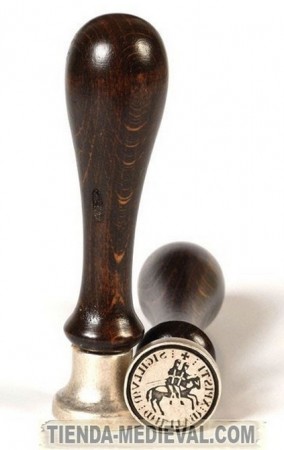
This would be the origin of the sealing wax capsules, which today are placed on the neck of wine bottles, especially “reserva” ones.
Recommended Wax Seals for You
If you have been fascinated by this journey through the world of sealing wax and would like to start creating your own unique pieces, we encourage you to explore our selection of wax seals and other items that will allow you to add a personal and medieval touch to your desk. You can find seals with shield designs as well as complete beginner kits. Choose the one that best suits your style and rediscover the magic of handcrafted correspondence.

